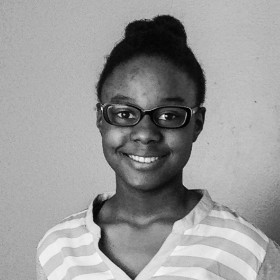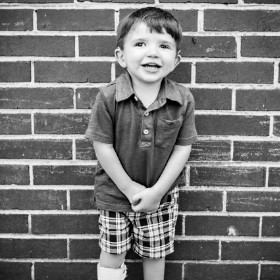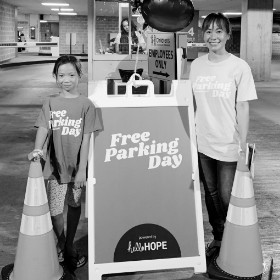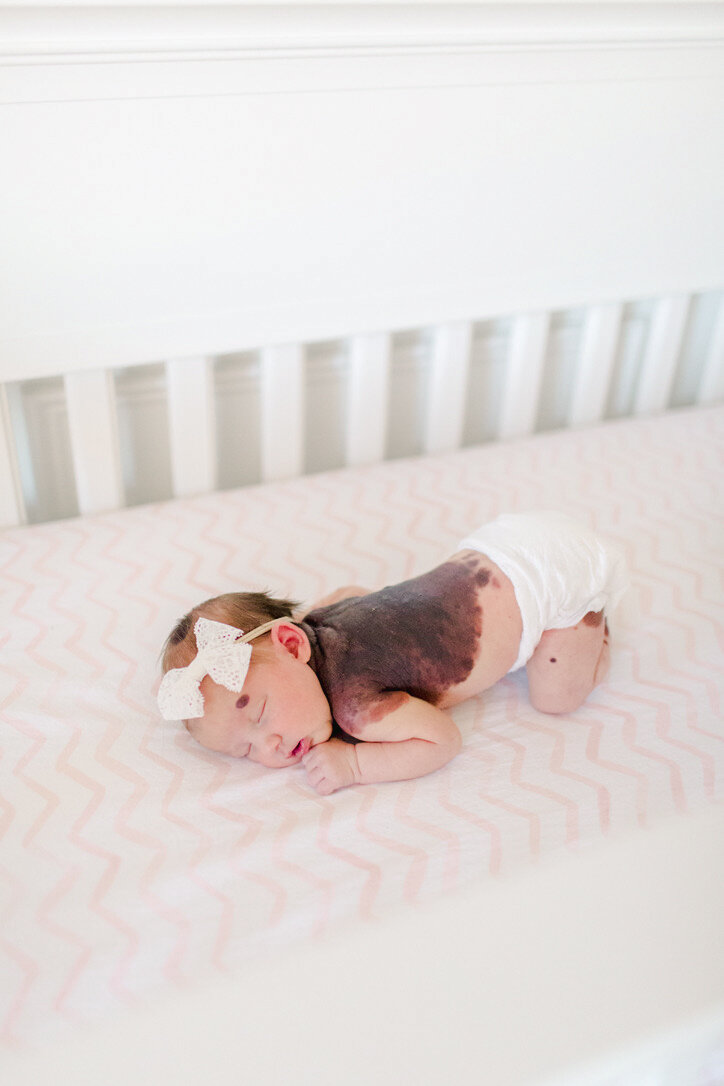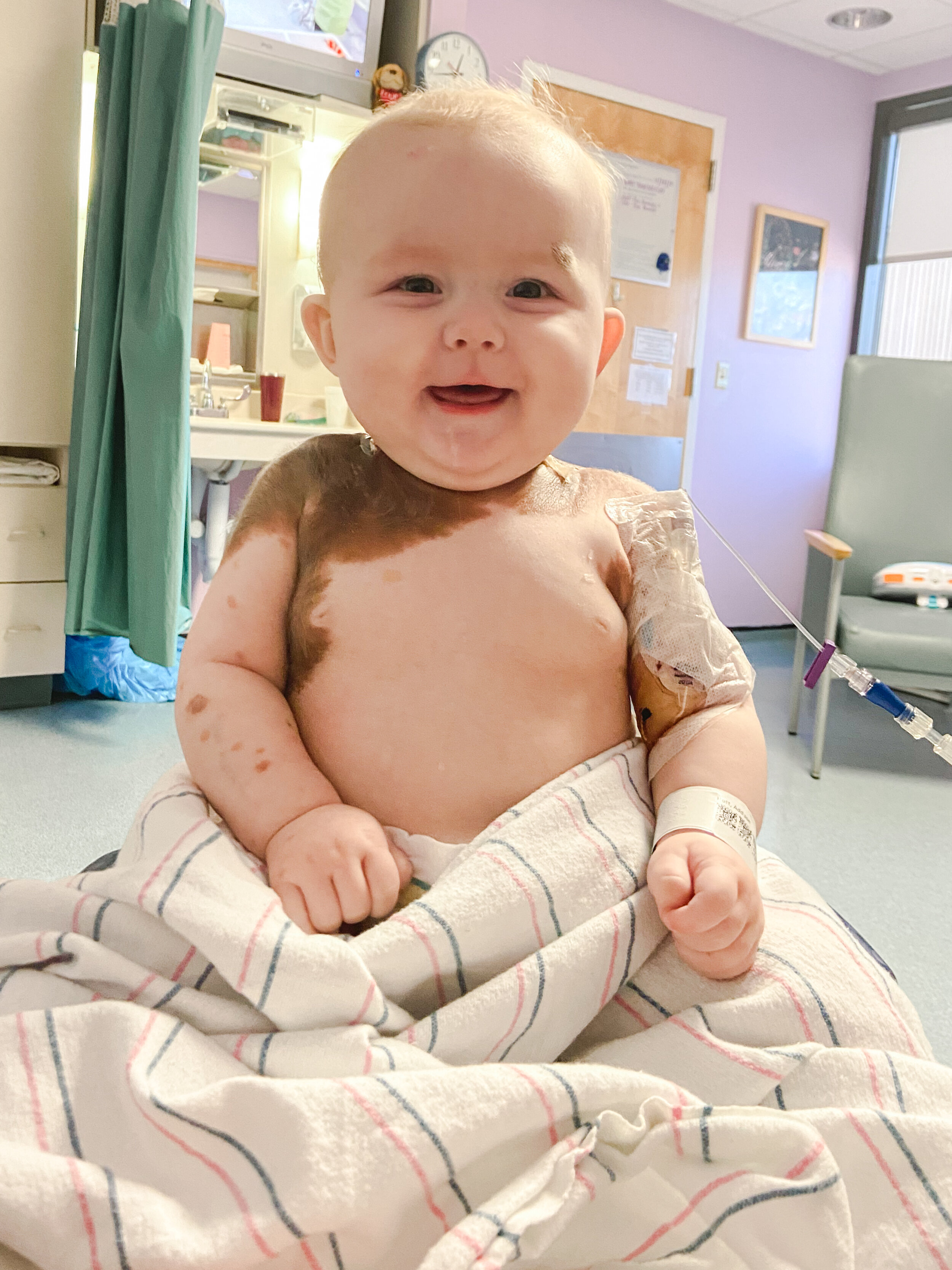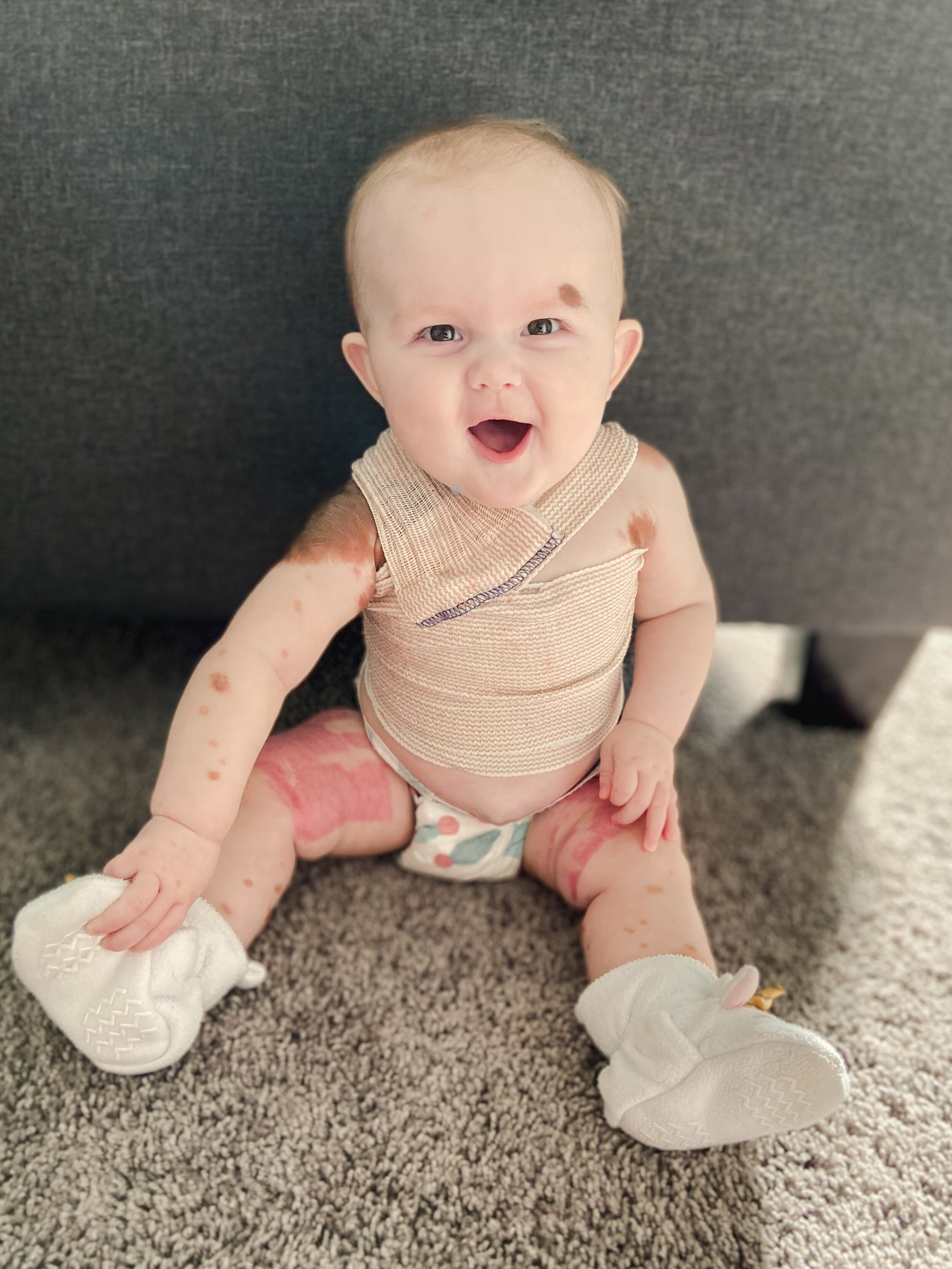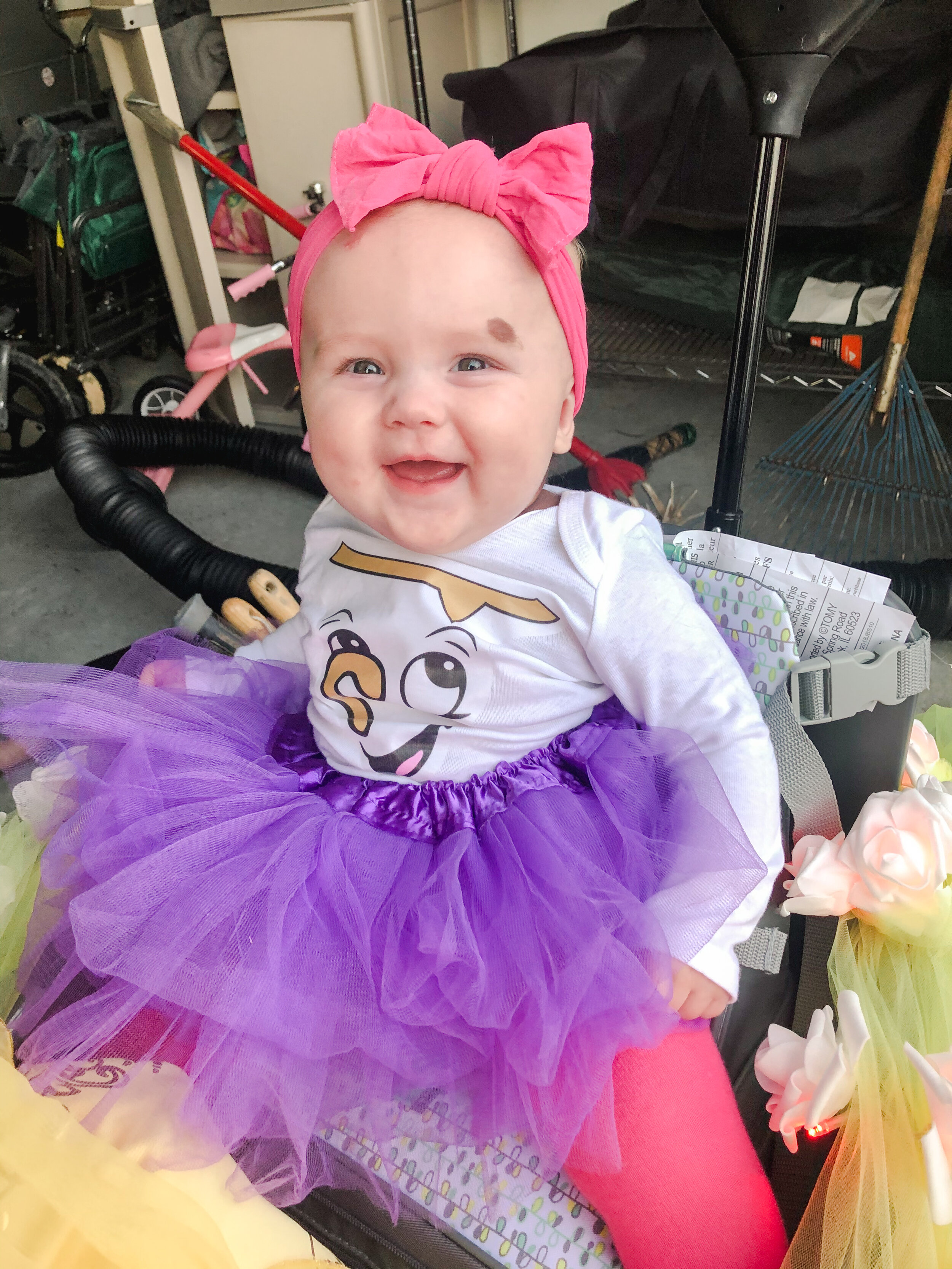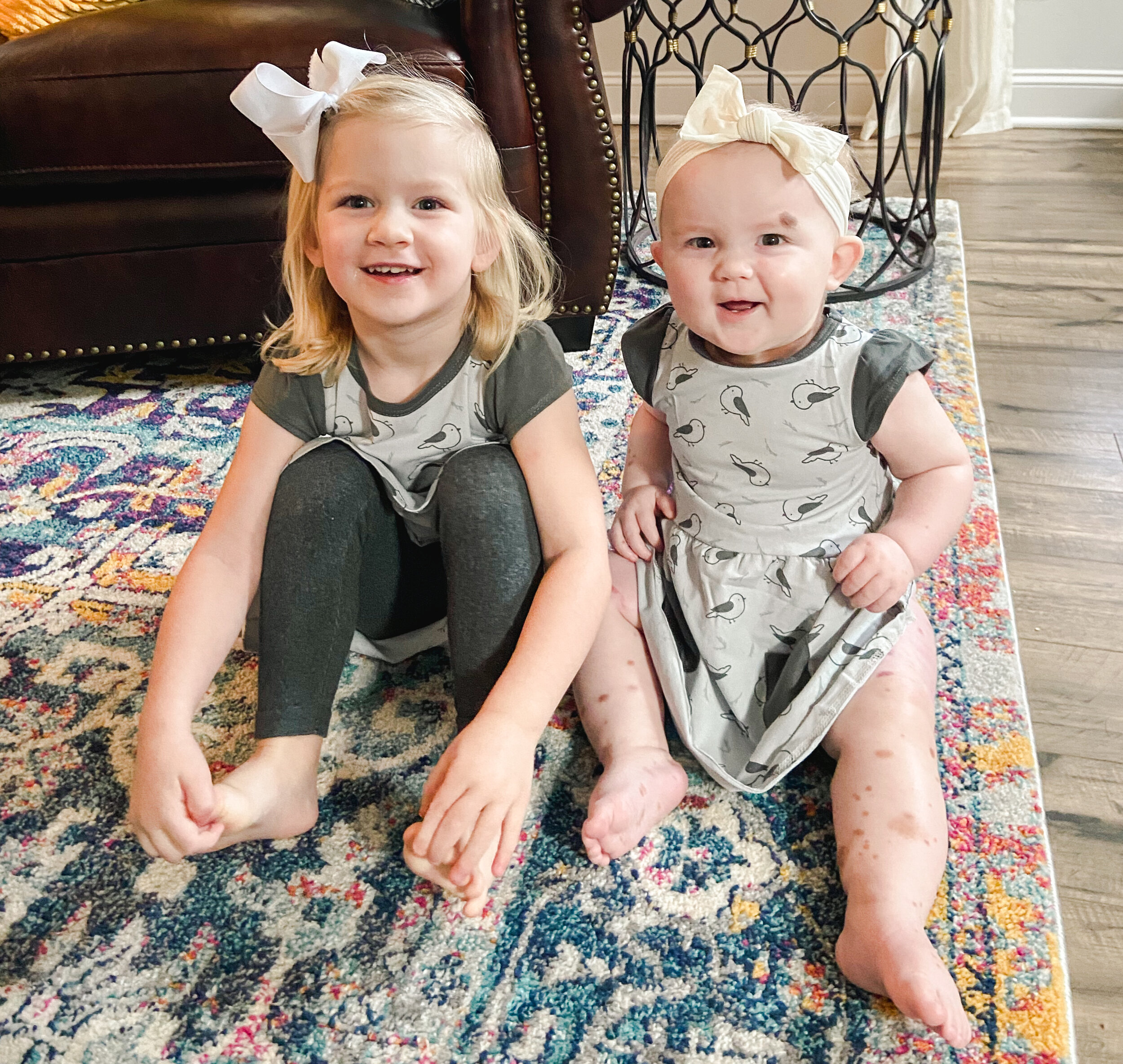Neurocutaneous Melanosis and Giant Congenital Melanocytic Nevus: Addie's Story of Hope
Heather Hott was in the first few years of marriage and motherhood when she and her husband Rob received two pieces of shocking news, back to back: Heather had a rare spindle cell carcinoma – a cancerous tumor – and she was pregnant with their second child.
Before there was time to begin to digest this news, immediate, life-altering decisions needed to be made. The recommended course of treatment for the cancer would put the health of Heather's pregnancy and unborn child in jeopardy, but choosing not to treat the cancer might have grave consequences for her own health.
Heather quickly chose to delay treatment until after her baby was born. She remembers, “We definitely put it in God's hands. We prayed that the cancer would not metastasize and were going to go forward with the pregnancy."
Heather maintained this hopeful and positive outlook throughout her pregnancy with her daughter and scheduled a resection of the carcinoma for May 2019 — one month after her daughter's due date. Mercifully, Heather's pregnancy was healthy, and she was able to carry her daughter to term. In April 2019, Heather was admitted to UVA hospital for a planned cesarean section.
"This was my second c-section, and I recognized several members of the medical staff from my first. The atmosphere in the operating room was really light and airy until right after our daughter Addie was born. The hospital used a drape, so I couldn't see her, but I could see from the expressions on the faces of the people around me that something wasn't right," Heather recalls.
After calling in the NICU team, the Hotts were told that their daughter had a large birthmark, a Giant Congenital Melanocytic Nevus that occurs approximately once in every 500,000 births. When Rob was allowed to see his daughter, he was surprised to see that the birthmark covered most of their daughter's back and wrapped to the front of her body around her neck and arms. But Addie seemed otherwise healthy, making it confusing that dozens of medical staff were being ushered into the operating room.
Heather and Rob received very little information in the hours that followed, beyond being told that Addie would need an MRI. When Heather asked why this was necessary for a skin condition, a member of the pediatric team said that she had done some research and had learned that Addie's birthmark, also called a nevus, might be a sign of yet another rare condition.
Addie went back for several hours of imaging to rule out possible neurological conditions, and the Hotts hoped for a reassuring report. At 2 AM they received the news that Addie had lesions on her brain, and they would have to wait until the morning to learn more.
Of course, they immediately had questions about the implications of this news. Heather remembers, "I wanted to know what that meant — was she going to the NICU? Does she have cancer? Could she seize?"
"As surprised as we were to see the size of Addie's birthmark, she was incredibly beautiful and happy as a clam — we weren't expecting additional medical concerns, based on the nevus," Rob adds.
The Hotts were finally given a name for their daughter's neurological condition: Neurocutaneous Melanosis. Soon after, they were discharged from the hospital and began making plans for what their next steps should be.
Finding Treatment and Support for Giant Congenital Melanocytic Nevus
At two weeks old, Heather took Addie to New York City to be examined by Dr. Khakoo, a leading doctor for Neurocutaneous Melanosis. She was able to determine that Addie was asymptomatic and had not been born with swelling on her brain — a huge sign of hope for their daughter's health. Around that time, Heather also received good news about her own health; the resection of her carcinoma was wildly successful, and she would not need chemotherapy or radiation.
With a clean bill of health for Heather, she and Rob quickly made the decision to find a team for Addie's care and to move their family to be close to that team so that their daughter would have the help and support she would need in the years to come. The staff at Duke University in Durham, North Carolina, quickly became their first choice, as that would bring them closer to a built-in support network with Heather’s extended family.
Over the course of the next few months, the family relocated. This separated the family temporarily, as Heather moved to North Carolina with Olivia and Addie first, and Rob followed later after finding work in the area. It was a difficult season for them, but by choosing to divide priorities, they were able to make important steps to address Addie's health and wellbeing within the first months of her life.
One of the first big decisions that needed to be made would be whether to consider a series of removal procedures to replace some of the nevus tissue along Addie's back. The nevus was rough, bumpy, and dark, meaning it would be extremely difficult to tell if cancerous skin cells developed — something for which Addie was already considered higher risk. No sweat glands were present in the nevus tissue, including her armpits, making her subject to overheating easily, as well as creating chronic itching and discomfort.
After careful consideration with their medical team, the Hotts decided to go forward with a removal plan. Heather remembers that this decision was met by skepticism and confusion from some in their community.
"People asked us, 'Why change her? God made her this way. Why go through the pain and the suffering of these surgeries to change her?' We get it often. And it's not that we don't love Addie for who she is — we absolutely love Addie for exactly who she is. But realistically, with a nevus that big, you're not going to be able to tell when something changes, and not seeing those changes means the possibility of missing the indicators of melanoma."
Addie’s first surgery was an excision of part of her scalp nevus in July 2019. Her second surgery, which would begin the process of removing the nevus on her back, was scheduled for November 2019, with an estimated hospital stay of one week. The surgery appeared to go well, but days later, Heather noticed that the recovery process wasn't going as they had hoped.
Addie suffered an unexpected setback, causing the projected one week stay to turn into a month. Addie eventually received successful skin grafts, to the great joy and relief of her family. Skin was taken from her thighs and stomach and placed along her back from her neck to her waist.
Daily Life and Care for Addie
To keep her skin healthy and to help address the scarring created by the grafts, Addie needs lots of daily attention in the form of scar massaging and moisturizing, plus physical therapy. The whole family participates in these daily steps in Addie's care, including her older sister, Olivia.
"That way Addie doesn't have to feel that she's doing this alone. Addie will grow up seeing that this is something her family — her sister especially — is doing with her," Heather explains.
The Hott family has found other creative ways to encourage their daughter, as well. Heather's mother modified a doll for Olivia to include a nevus, so that Addie sees herself reflected in the world around her, and Heather and Rob are always considering ways to help their daughter feel seen and supported, knowing that one day soon, she will face potential challenges due to her visible skin differences.
Finding Hope
When asked what hope looks like for their family, the Hotts share a perspective that is deeply rooted in personal faith, as well as an awareness of the realities their daughter will face moving forward.
Even as parents, Rob and Heather have had very mixed experiences, ranging from curious neighbors to strangers making cruel assumptions about their daughter's health and wellbeing. They use their grief over these negative experiences to fuel their passion for advocacy and creating awareness for their daughter's condition and the people who share her diagnosis.
"If we pretend she's never going to have pain or struggle, she's just going to be let down. The world can be cruel, and we know she's going to have to face that. But we want her to also know that she is unconditionally loved, she's not alone and she is exactly the way God wants her to be," Heather concludes. "She's still a baby, so she's going to have her own journey with her diagnoses and find her faith. The journey is going to be hard, but it will also make her resilient. She can overcome this, and it will give her strength for the rest of her life."
Rob continues, “We know that we were given her for a reason, and she was given us for a reason. We have hope knowing that God has great plans for her, and we're along for that ride.”
The Hotts have turned to Scripture for strength and encouragement in their journey. Romans 12:12, a passage they have turned to often, reminds them, “Be joyful in hope, patient in affliction, faithful in prayer.” Their faith and joy truly shine through in their daughters.
Today Addie is nearing her first birthday and is a happy baby who brings light and joy to everyone who knows her. In the months and years to come she will continue to have more procedures, including having skin expanders inserted, to accommodate her growth. Though these upcoming surgeries and the uncertain nature of the future are always present in the thoughts of her family, they continue to face the future with hope, faith, and courage.
Thank you to Rob and Heather for sharing this inspiring story of hope and faith. They were also kind enough to share a few resources they have found helpful for education, awareness, and empowerment. Please visit the links below to learn more.
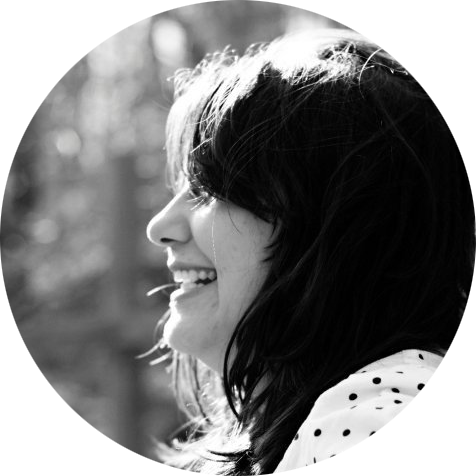
About the Author
Catie Cummings-Morris is a freelance author specializing in non-profit work and food writing living in Chattanooga, Tennessee, with her husband, daughter, and a vegetable garden.
Loading...



